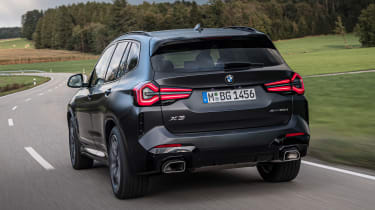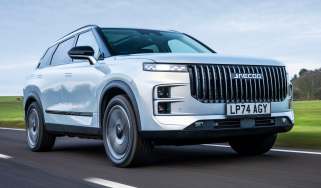BMW X3 review – a good-to-drive premium mid-sized SUV (2018-2024)
"The latest BMW X3 blends comfort, technology and real driver appeal in a very well rounded package"
Pros
- Excellent handling
- Plenty of space
- Range of engines
Cons
- Expensive
- Five seats only
- Tech feeling its age
Verdict – is the BMW X3 a good car?
Despite launching way back in 2017, the third-generation BMW X3 is still one of the best premium SUVs you can buy. It’s spacious, comfortable and great to drive, and with a range of engines including petrol, diesel, hybrid and fully electric, there should be a model to suit all situations. The on-board tech isn’t the most cutting-edge, admittedly, but there’s a simplicity to its operation that shouldn’t be sniffed at in a world full of touch-sensitive climate controls and autonomous drive functions.
BMW X3 models, specs and alternatives
The BMW X3 was the brand’s second SUV, launching after the huge success of the BMW X5 as a smaller, more affordable premium model. It’s grown in size since the original, so the BMW X3 has evolved into a mid-sized SUV sitting above the compact BMW X1 and BMW X2 coupe-SUV.
Not only has it grown in size, but in its third generation it’s also grown in sophistication, with lots more on-board tech, added premium feel, and for the first time, a choice of petrol, diesel, plug-in hybrid and electric power – the latter badged the iX3. The third-generation X3 has been around since 2017, though, and is nearing the end of its life cycle, so it’s starting to feel outdated. BMW announced a next-generation X3 in 2024 while dropping the iX3 for the next generation.
More reviews
Traditional rivals to the BMW X3 include the Audi Q5 and Mercedes GLC, while more left-field competitors include the Alfa Romeo Stelvio, Volvo XC60, Jaguar F-Pace, Porsche Macan and Range Rover Velar in the premium mid-sized SUV segment.
The X3 is offered in the usual xLine and M Sport trims, with all versions getting LED lights front and rear, an automatic tailgate, three-zone climate control and BMW Live Cockpit Plus with built-in navigation. M Sport costs around £1,800 more and brings larger wheels, different trim and M Sport suspension for a sportier drive.
The 2.0-litre petrol 20i opens the range, with the 20d and 3.0-litre 30d serving diesel tastes – the latter boasting 282bhp. There is also a plug-in hybrid X3 xDrive30e, that'll prove tempting for company car drivers and private buyers alike, thanks to its low emissions and the fact it’s similar in price to the xDrive30d diesel. We've reviewed the all-electric iX3 version separately.
In addition, there are two hot M Performance models – the 335bhp M40d diesel and 355bhp M40i petrol – plus a fire-breathing X3 M with more than 500bhp and a 0-62mph time of 3.8 seconds. It’s rapid, but a bit too stiff and compromised for comfortable use on UK roads.
The X3 uses the same mechanical architecture as the BMW 5 Series and an eight-speed automatic gearbox is standard across the range – iX3 excluded. Unlike the smaller X1, every X3 has xDrive four-wheel drive – again, not including the rear-wheel-drive iX3.

















